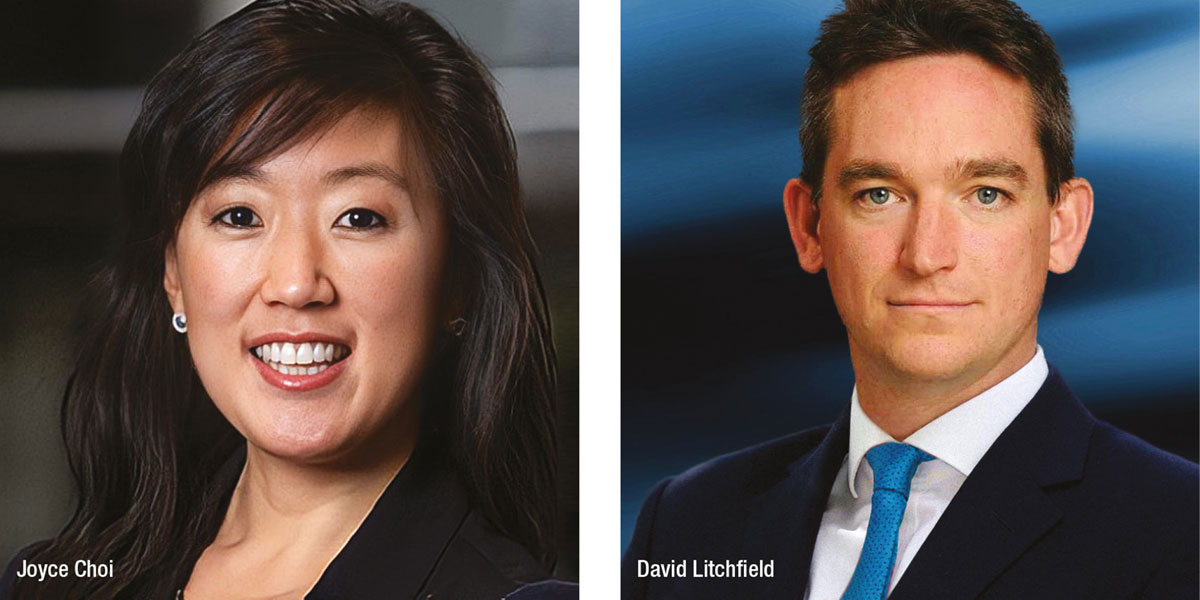Where instrument selection can be key, understanding cash and derivatives instruments and the interplay between them is invaluable.
The DESK spoke with Joyce Choi, director of the institutional product strategy for BlackRock’s US iShares Fixed Income ETF business, and David Litchfield, director, derivatives sales at Cboe Global Markets, to discuss how institutional investors could use exchange traded funds (ETFs) and futures, such as IBIG and IBHY futures, to effectively express both investment and trading ideas in the market.
How are institutional traders and investors engaging in the ETF market today?
Joyce Choi: Demand for ETFs significantly accelerated in 2021, resulting in global annual ETF industry inflows eclipsing US$200 billion to reach over US$1.2 trillion in assets under management (AUM) in the US. Institutional investors are among the fastest-growing adopters as they look to ETFs to help manage portfolio construction – by tactical or strategic allocations in light of changing market conditions – manage portfolio liquidity, and as a means to hedge risk.
David Litchfield: ETF adoption is becoming more of a mainstay within institutional portfolios, however the initial hang-up for active managers using a passive product has not completely gone away. Also, the fixed income asset class is perhaps considered a more complicated set of different instruments than equities, which can make evolution in fixed income collectively slower.
How are they used during a sell-off, or when investors need to take different directional positions?
Joyce Choi: During the worst of the market turmoil in February and March 2020, institutions turned to the most liquid fixed income ETFs as sources of real-time price discovery and cost-efficient execution when price transparency and liquidity had sharply deteriorated in individual bonds. On 12 March 2020, one of the worst days for equity markets in modern history, the LQD ETF traded almost 90,000 times on exchange, compared with just 37 times on average for its largest five bond holdings. High trading volumes support the notion that fixed income ETFs provided actionable prices for investors at a time when the underlying bond market was challenged.
David Litchfield: The firms that use ETFs for long positions are also looking at the short side. Liquidity concerns increase on the downside as the market turns and that’s where ETFs did a fantastic job. However, not all investors can use ETFs. Shorting ETFs requires a prime broker relationship with all the necessary agreements in place – that’s if it’s even allowed in the mandate. Also, one needs to source those ETF units to be able to borrow and then sell short via a cash equity desk. This is where instruments such as IBIG and IBHY futures tick a lot of boxes where other instruments might not.
Joyce Choi: With the mutual growth in both AUM and ADV, many fixed income ETFs can be positioned for not just long positioning, but also through shorts. For example, this could be expressed in outright shorts of the ETF, through the options market, or through futures. This is evidenced in the growth in open interest, as average daily volumes across the futures market are averaging ~US$235 million and open interest in options in LQD or HYG continue to reach new highs – US$68 billion in HYG, US$27 billion in LQD.
How are cash and derivative instruments used together?
Joyce Choi: The growth of the ETF ecosystem now allows for investors to access market beta through various derivative vehicles. While ETFs can be an attractive and straightforward alternative to derivatives when considering the total cost – operational and investment efficiency for fully-funded positions – the growing volumes of derivatives makes these instruments another viable option for investors when evaluating long or short positions in the credit markets. Furthermore, the fungibility of the ETF with its derivative counterparts has helped broaden the number of investors who participate in the market. For instance, an investor’s preference to express a short view on the high yield market could be expressed either through the ETF, total return swaps (TRS), options or futures market, to name just a few examples. The pressure on the borrow cost of the ETF results in an opportunity for investors to take advantage of the lopsided market to go long any of these vehicles and realise the lending yield of the underlying ETF.
David Litchfield: Managers can ask a bank to write a total return swap (TRS), where one pays the index performance or one can go short via the credit default swap index (CDX). PMs can buy protection quite easily on the short side, so going long and short in those derivatives is a very easy, well understood path. Against that backdrop, the evolution towards using listed derivatives, including an IBIG or IBHY future, then adds a price on screen with an observable orderbook. One doesn’t have to go and source those ETF units – if you want to go short, you can just hit the bid.
What needs to be set up to allow that to work?
David Litchfield: For OTC derivatives, ISDA agreements are needed in place across all the different mandates. Big funds might have ISDAs in place so they can trade OTC derivatives, but not all of the pools of capital a PM manages will have ISDAs in place, like smaller segregated mandates. That can be challenging, because applying the same investment objectives across all of those mandates is difficult if the PM is constrained by the instrument selection. Futures have the advantage of being written in to most investment mandates.
How important is having access to different instruments?
David Litchfield: Instrument selection is key. It makes a difference in how one can take long and short positions, and what effect that has. For example, spread risk (CDX) versus spread and duration (index, like ETF, futures, TRS). For HYG and LQD, there is a developed borrow market, although that borrow rate can be volatile and, at times, be very expensive. The futures don’t remove all those issues but the implied financing rates is almost a democratised rate of everyone going long, going short – that blended rate. With derivatives like futures, it is also possible to lock in that financing rate whereas ETF borrow is typically subject to recall or repricing.
Where investors are not able to lend out their ETF units (through operational or mandate restrictions) they can get paid that financing rate by going long the future instead, as they will be supplying those ETF units implicitly, in the futures.
If one looks at the futures curve at the moment, it is downward sloping really as a reflection of the cost of borrowing those ETF units; the cost of financing that short position. If an investor is sitting on an ETF and is not able to lend them out, they could consider swapping those ETF units for futures instead.
©Markets Media Europe 2025













